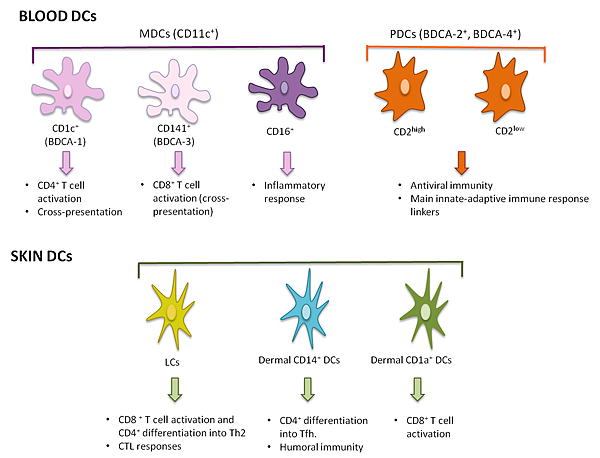










DC:Dendritic cell
Dendritic cells(DCs)are Antigen-presenting cells(also known as Accessory cells)of the mammalian immune system.
Their main function is to process antigen material and present it on the cell surface to the T cells of the immune system.
They act as messengers between the Innate and the Adaptive immune systems.
Dendritic cells are present in those tissues that are in contact with the external environment, such as the skin(where there is a specialized dendritic cell type called the Langerhans cell)and the inner lining of the nose, lungs, stomach and intestines. They can also be found in an immature state in the blood.
Once activated, they migrate to the lymph nodes where they interact with T cells and B cells to initiate and shape the adaptive immune response.
At certain development stages they grow branched projections, the dendrites that give the cell its name(δένδρον or déndron being Greek for "tree"). While similar in appearance, these are distinct structures from the dendrites of neurons.
Immature dendritic cells are also called Veiled cells, as they possess large cytoplasmic 'veils' rather than dendrites.



 留言列表
留言列表
